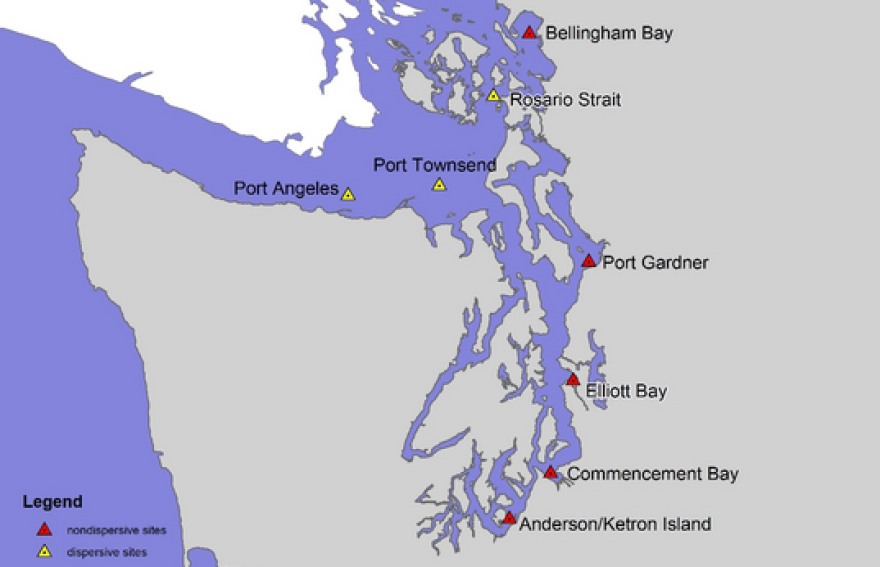Some residents in the Olympia area are concerned about dredged materials being disposed of in the Puget Sound. They say the Department of Natural Resources is failing to protect underwater ecology at the same time that state and federal governments are spending millions on cleanup.
Bob Lyden is a resident of the area near Anderson Island and a member of the U.S. Coast Guard. He's also part of a group of locals pushing to stop the state from putting dredged materials into a sanctioned dumping site. The group is concerned for local wildlife, including Dall's porpoise and Dungeness crab.
“Geoducks are right across from the area that they're dumping at. It's less than a mile away, on the shore of Anderson Island. And the commercial Native America[n] companies are doing a lot of geoduck[-harvest]ing around our area.”
Most of the dredged material of concern is from the Olympia Yacht Club. But there are four government agencies working together on this, aiming to make it as safe as possible. The lead agency is the U.S. Army Corps of Engineers.
“What they’re trying to say in terms of we’re ruining the Puget Sound is just so out of context," said Lauran Warner, a biologist with the U.S. Army Corps of Engineers.
She says a lot of sediment pours in from the Nisqually River, for example. And the site where dredged material is being buried is so far underwater that it would never get into geoducks.
“There’s not going to be many geoducks down there. There’s not going to be much down there,” said Warner. “I mean, it’s a transit area. We take pictures down there, we take samples. And it recovers very quickly after a disposal event.”
They do also move the dirt at night, but contrary to some claims by citizens, it’s not about keeping secrets. The agencies say it’s for all kinds of reasons, including tidal movements and safety.
The disposal site near Anderson and Ketron islands is one of five so-called non-dispersive sites, selected by the governments for disposal of dredged materials.







